Flush your prayers down the toilet at this unique Japanese temple
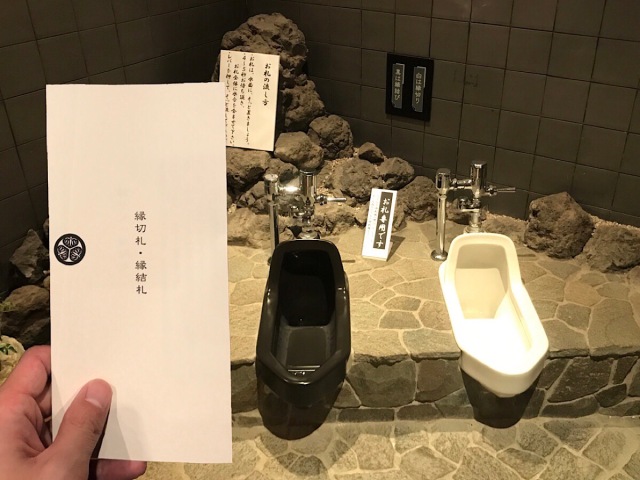
A new way to pray at the porcelain altar.
You can find many temples around Japan where people go to pray for good relationships, but there are some temples designed to help people break off relationships too.
▼ One such temple where you can sever bad ties is Mantokuji Temple in Gunma Prefecture.
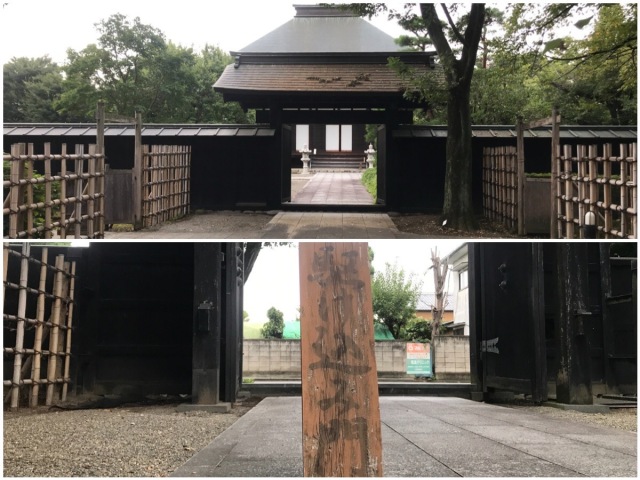
During the Edo Period (1603-1868), Mantokuji was one of two convents of the Jishu sect of Buddhism, the other being Tokeiji in Kamakura, which acted as shelters where women could escape from their abusive husbands.
▼ The image below shows a woman fleeing from her husband, throwing her sandals through the gate in order to be saved by the temple.
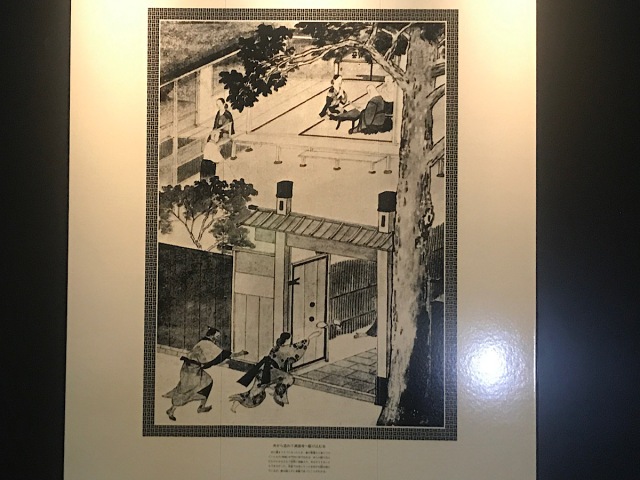
Tokeiji and Mantokuji were venerable temples officially recognised by the ruling Tokugawa shogunate where women would be able to divorce their husbands, playing the role of what would now be considered a family court.
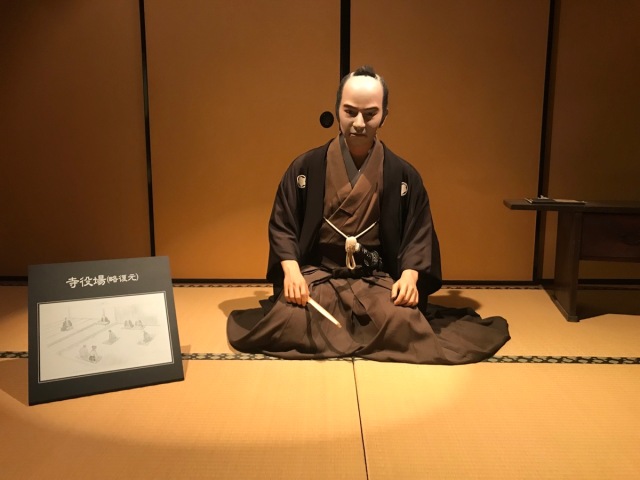
At a time when women were severely discriminated against, these temples were beyond their time, helping women in extraordinary ways that ran against the norms of traditional society. However, the nunneries eventually petered out, and though Tokeiji continued as a male-run temple once the nunnery closed, Mantokuji fell into disrepair.
Fortunately, locals worked to restore Mantokuji to its current state, and to help keep its heritage alive, the Enkiridera Mantokuji Museum was set up on the grounds.
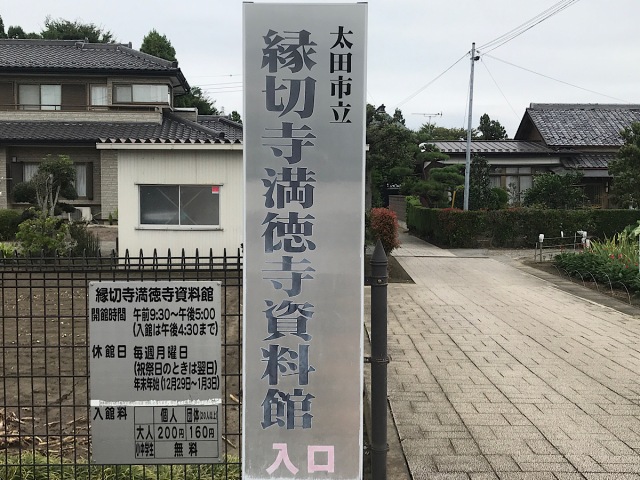
“Enkiridera” translates to “Tie-Cutting Temple“, which has become something of a moniker for Mantokuji, due to its history in helping women sever ties from their abusive husbands. Today, that power lives on at the temple, but these days, there’s a more a unique way for visitors to cut ties with bad relationships.
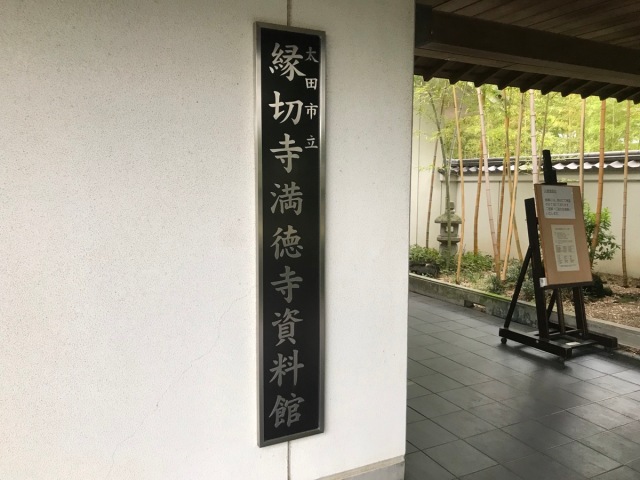
Once people enter the building, pictured above, and pay the 200-yen (US$1.39) fee for adult admission, they have the option to purchase a set of papers designed to be used as prayer tablets, for an additional 200 yen.
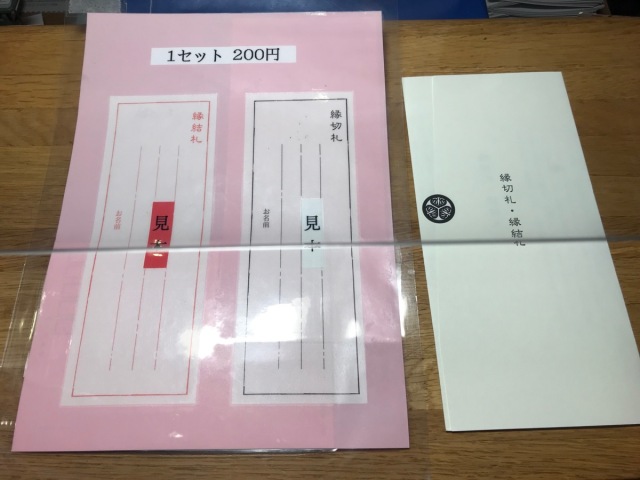
Because balance is the key to all relationships, the red paper allows you to make a wish for marriage or a relationship that you would like to bring into your life, while the black paper allows you to make a wish for divorce or a relationship that you would like to cut from your life.
▼ The red pen is for writing your wish on the red paper, and the black pen for the black paper. Don’t get them mixed up!
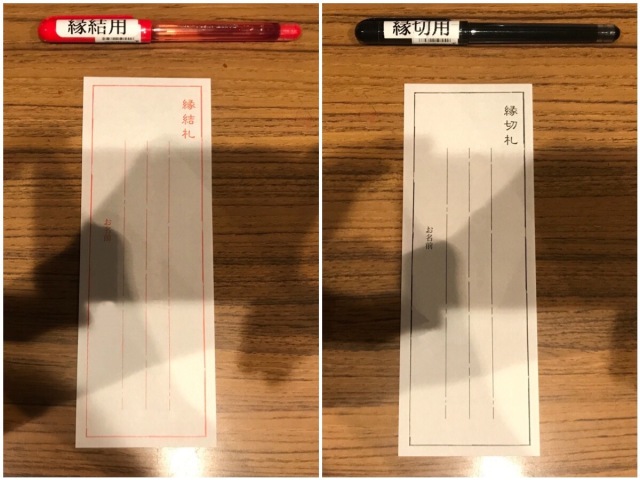
Once you’ve written your wishes down, it’s time to enter the prayer area through a wooden gate, which resembles the gate women used to rush through at the temple. Once you’re safely on the other side, you’ll see two doors, which might remind you of men’s and women’s restrooms, and there’s a reason for that.

Why? Well, because each of these prayer rooms is home to two Japanese squat toilets!
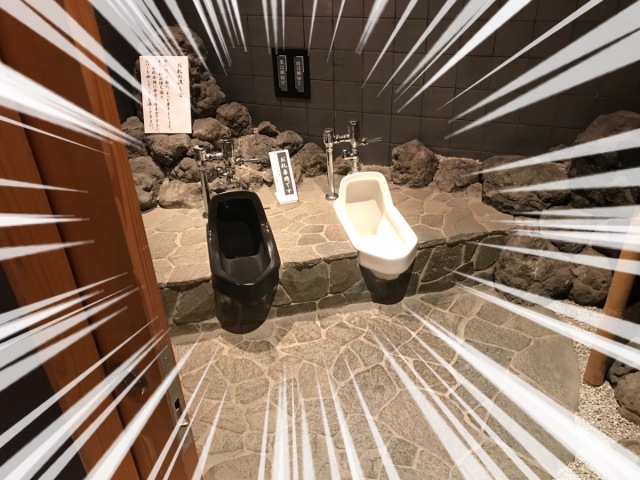
Whatever you do, DO NOT squat and drop a deuce in either of these receptacles — there are actual restrooms for that elsewhere on the premises. These toilets are solely for prayer, as they’re designed to receive your paper wishes and carry them away to the otherworld for fulfilment.
▼ The flush buttons for each toilet (left, below) will send your prayers off on their respective journeys.
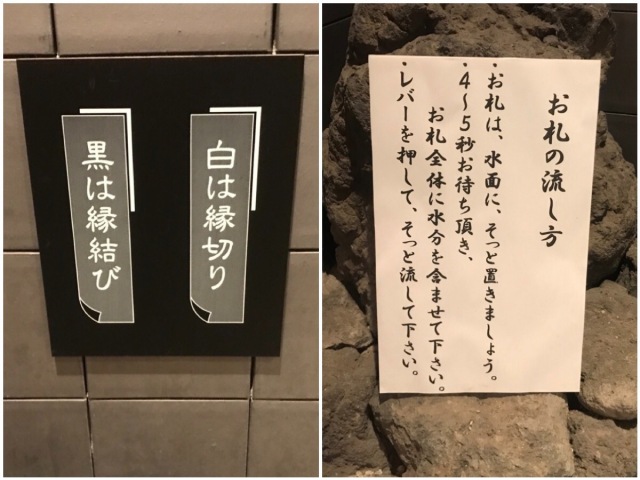
According to the instructions, your wish for cutting ties should be placed in the white toilet, while your wish for creating ties should be placed in the black toilet. Again, don’t get them mixed up or god knows where they’ll end up!
▼ There’s a wide scope of possibilities for cutting ties, with the prayer on this paper reading: “Goodbye to single life.“
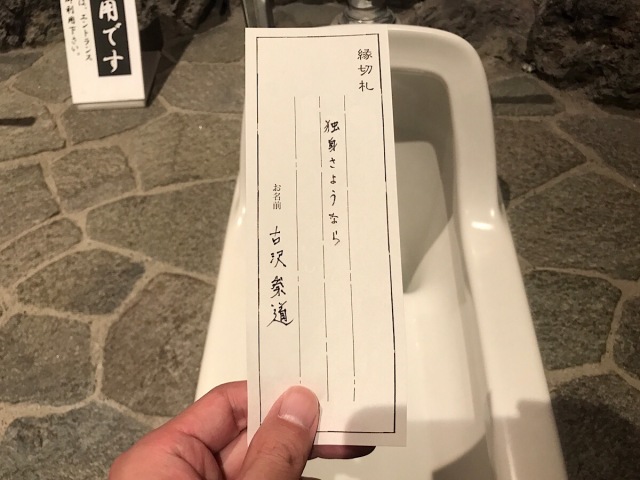
Once you’ve gently placed your wish on the surface of the water in the correct toilet, wait four to five seconds to ensure the paper becomes fully soaked.
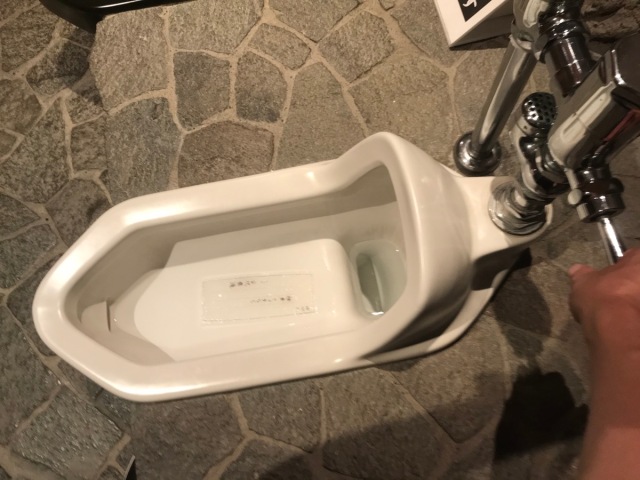
▼ Then…flush away!
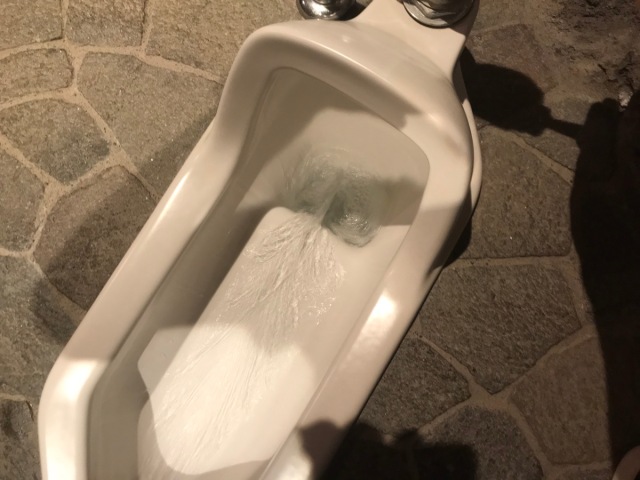
After saying good riddance to bad rubbish, it’s time to head over to the relationship-giving toilet.
▼ The prayer written on this paper reads: “I wish for a girlfriend”.
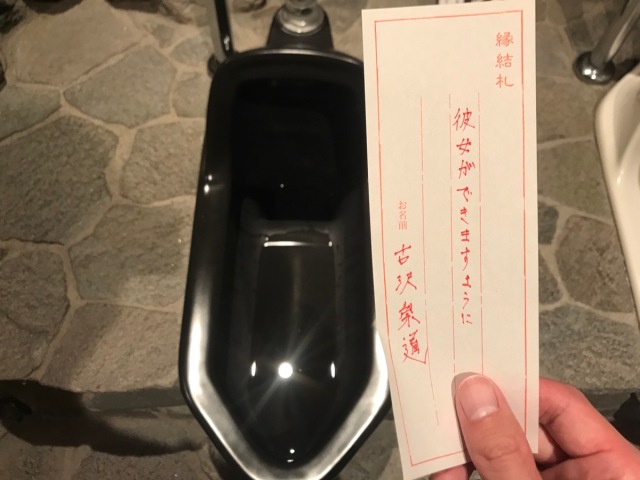
▼ Again, gently place the paper on the water…
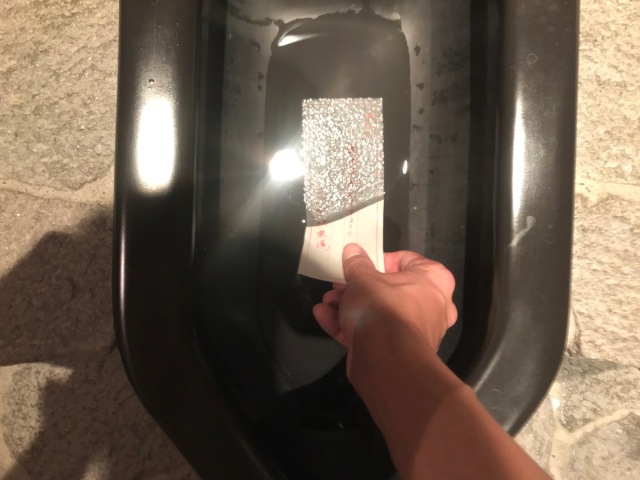
▼ …and flush away!

Seeing your prayer disappear with a flush provides you with a strange sense of accomplishment and satisfaction. It also makes you appreciate the Japanese squat toilet in a whole new light, now that they’ve become portals to the spiritual realm.
▼ The two prayer rooms aren’t segregated by gender so you can use either one of them — this is what the other room looks like.
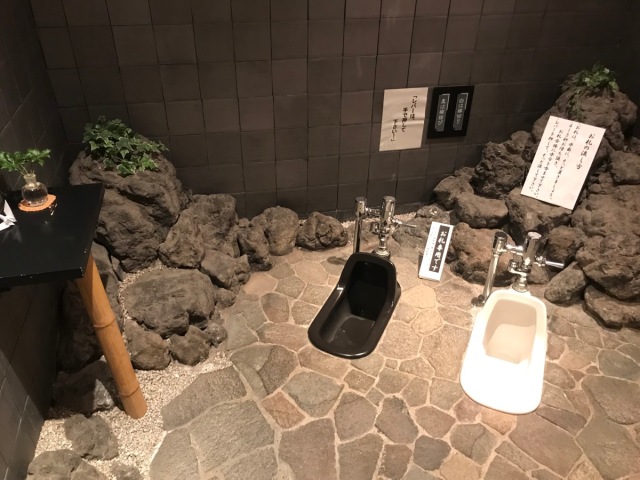
Some tie-cutting temples and shrines can be intimidating places that result in unexpectedly negative consequences, but Mantokuji’s toilet-flushing system makes the process much less daunting and a whole lot more fun.
For a lot of people, a fun approach like this can turn out to be the pivotal first step in taking a new direction in their lives, so here’s hoping the temple continues to maintain these toilets as a modern take on its longstanding traditions for generations to come.
Temple information
Ota Municipal Enkiridera Mantokuji Museum / 太田市立縁切寺満徳寺資料館
Address: Gunma-ken, Ota-shi, Tokugawacho 385-1
群馬県太田市徳川町385-1
Open: 9:30 a.m.-5:00 p.m. (admission until 4:30 p.m.)
Closed: Mondays (if Monday is a public holiday, the following day), New Year holidays (From 29 December to 3 January)
Admission: Adults 200 yen; Groups (20 or more) 160 yen; Junior high school students and younger free
Website
Images © SoraNews24
● Want to hear about SoraNews24’s latest articles as soon as they’re published? Follow us on Facebook and Twitter!
Credit:

0 comments:
Post a Comment